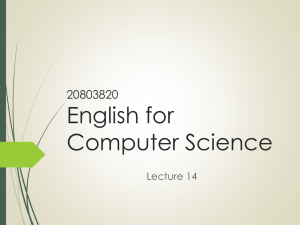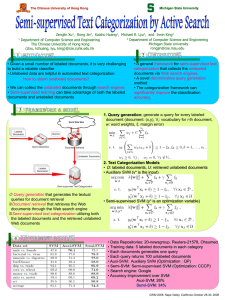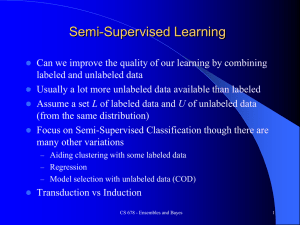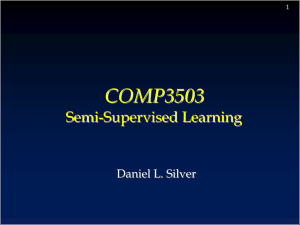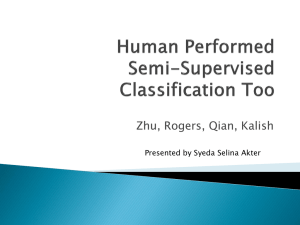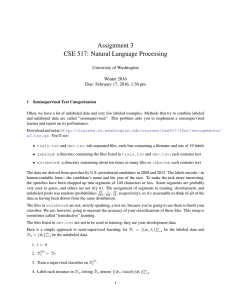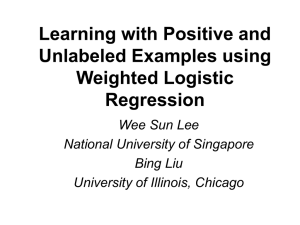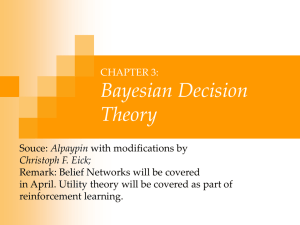A Large Margin Method for Semi
advertisement
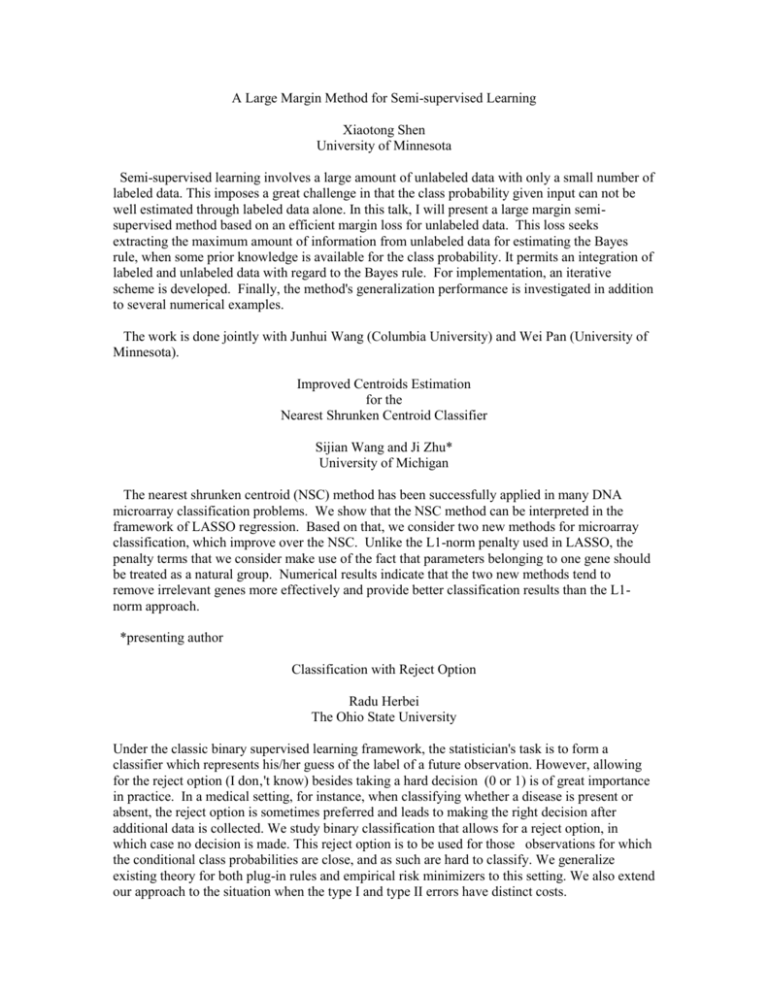
A Large Margin Method for Semi-supervised Learning Xiaotong Shen University of Minnesota Semi-supervised learning involves a large amount of unlabeled data with only a small number of labeled data. This imposes a great challenge in that the class probability given input can not be well estimated through labeled data alone. In this talk, I will present a large margin semisupervised method based on an efficient margin loss for unlabeled data. This loss seeks extracting the maximum amount of information from unlabeled data for estimating the Bayes rule, when some prior knowledge is available for the class probability. It permits an integration of labeled and unlabeled data with regard to the Bayes rule. For implementation, an iterative scheme is developed. Finally, the method's generalization performance is investigated in addition to several numerical examples. The work is done jointly with Junhui Wang (Columbia University) and Wei Pan (University of Minnesota). Improved Centroids Estimation for the Nearest Shrunken Centroid Classifier Sijian Wang and Ji Zhu* University of Michigan The nearest shrunken centroid (NSC) method has been successfully applied in many DNA microarray classification problems. We show that the NSC method can be interpreted in the framework of LASSO regression. Based on that, we consider two new methods for microarray classification, which improve over the NSC. Unlike the L1-norm penalty used in LASSO, the penalty terms that we consider make use of the fact that parameters belonging to one gene should be treated as a natural group. Numerical results indicate that the two new methods tend to remove irrelevant genes more effectively and provide better classification results than the L1norm approach. *presenting author Classification with Reject Option Radu Herbei The Ohio State University Under the classic binary supervised learning framework, the statistician's task is to form a classifier which represents his/her guess of the label of a future observation. However, allowing for the reject option (I don‚'t know) besides taking a hard decision (0 or 1) is of great importance in practice. In a medical setting, for instance, when classifying whether a disease is present or absent, the reject option is sometimes preferred and leads to making the right decision after additional data is collected. We study binary classification that allows for a reject option, in which case no decision is made. This reject option is to be used for those observations for which the conditional class probabilities are close, and as such are hard to classify. We generalize existing theory for both plug-in rules and empirical risk minimizers to this setting. We also extend our approach to the situation when the type I and type II errors have distinct costs.
